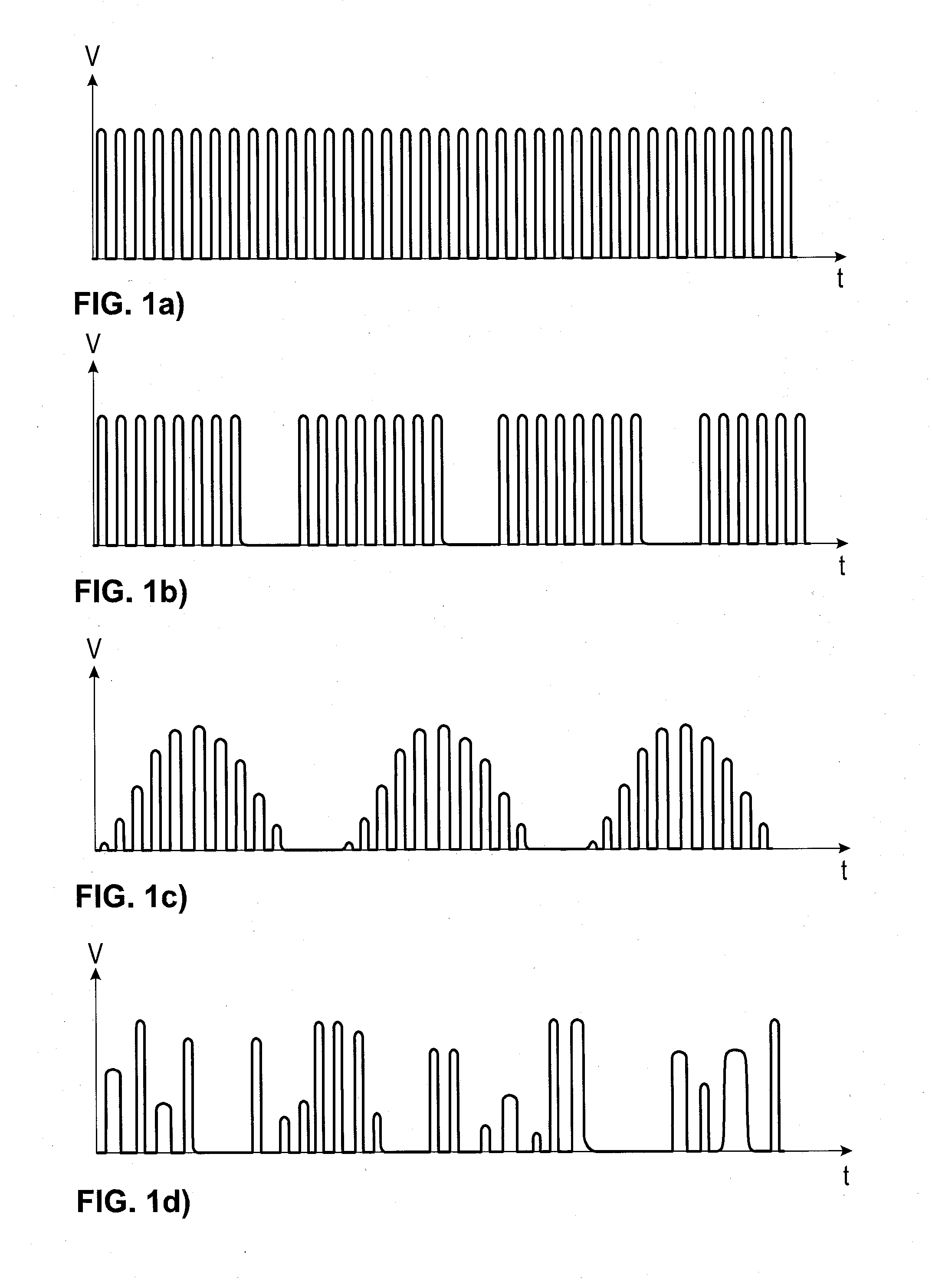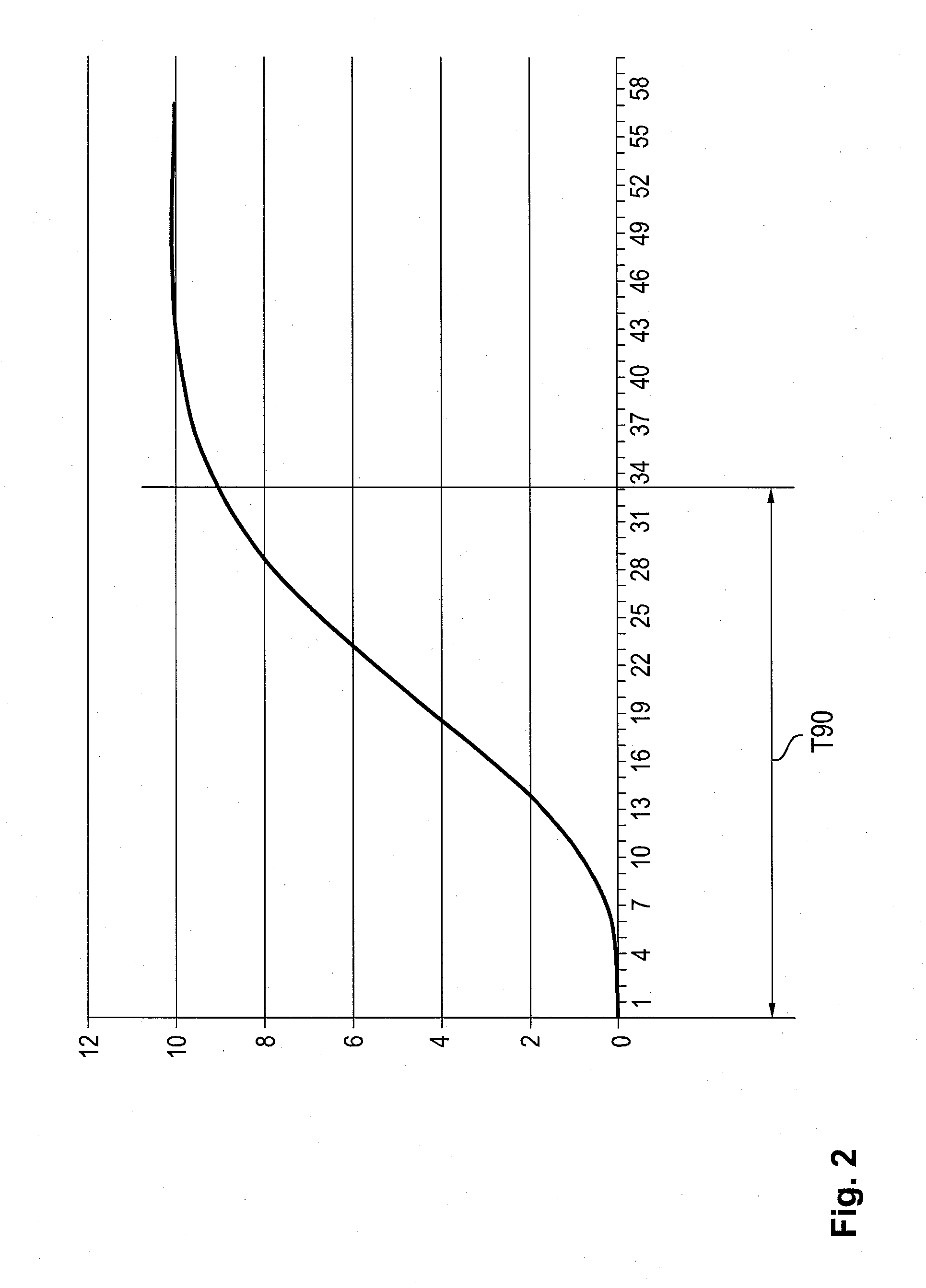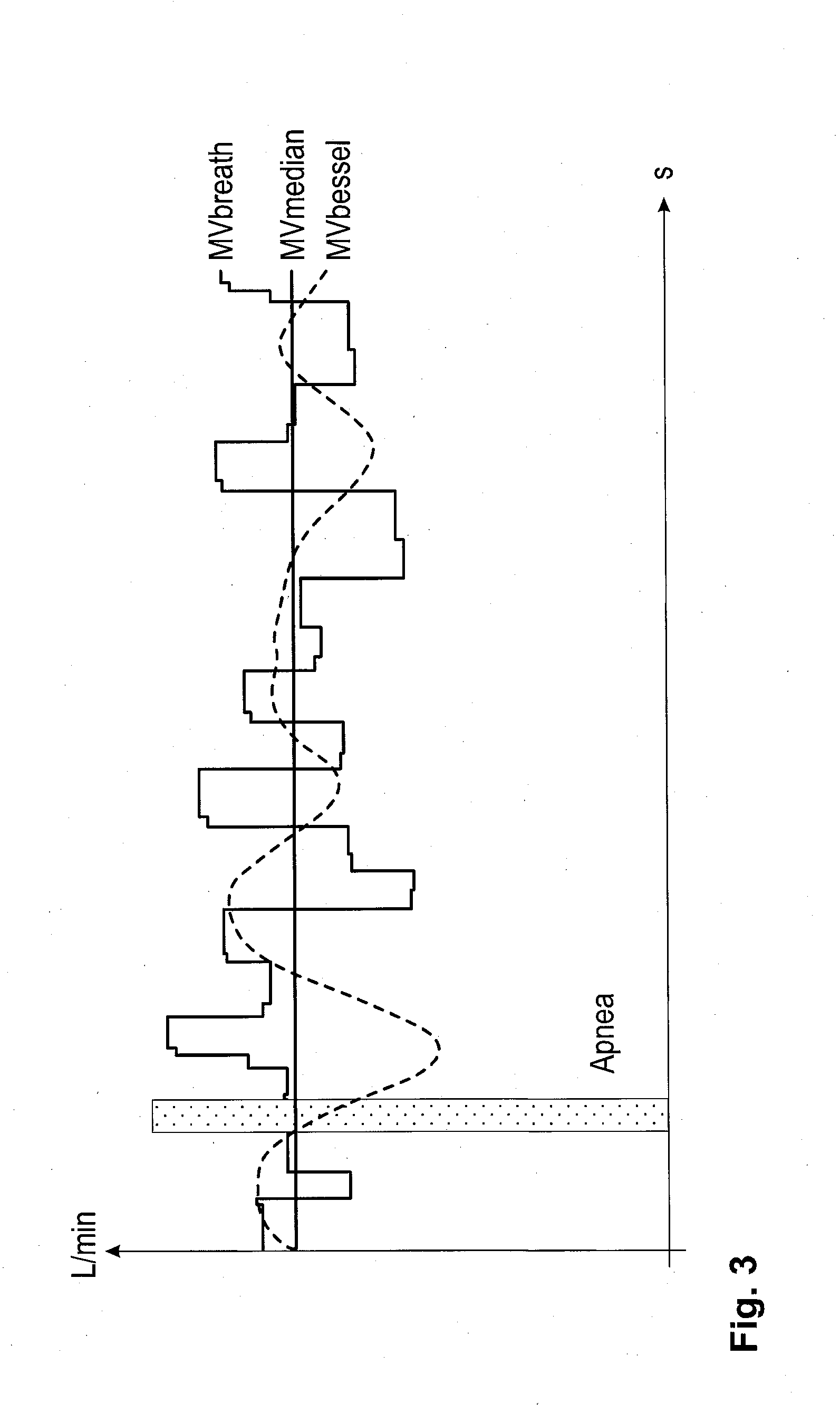Process and device for generating an alarm during a machine-assisted patient ventilation
a technology a patient, which is applied in the field of process and device for generating an alarm during a machine-assisted patient ventilation, can solve the problems of high acoustic discomfort of health care staff as well as patients, and the interval has a time-limited verification interval length, so as to reduce the number of clinically irrelevant alarms and increase the danger potential of patients
- Summary
- Abstract
- Description
- Claims
- Application Information
AI Technical Summary
Benefits of technology
Problems solved by technology
Method used
Image
Examples
Embodiment Construction
[0050]Referring to the drawings, the course over time of normal breathing (FIG. 1a) is graphically compared to the courses of three different pathological forms of breathing (FIGS. 1b, 1c, 1d). While FIG. 1a shows the course over time of normal breathing in relation to the inhaled and exhaled volume, FIGS. 1b-1d contain representations of Biot's breathing, Cheyne-Stokes breathing as well as ataxic breathing.
[0051]Cheyne-Stokes breathing (FIG. 1c) is characterized in that the individual breaths follow a wave shape. This means that the tidal volumes are at first greater and weaker and episodes of apnea lie between these individual breaths. The respiratory rate may also vary in this case.
[0052]In comparison to this, the breaths of ataxic breathing shown in FIG. 1d differ in their volume and frequency, whereby here as well the breathing activity can be interrupted by longer pauses, i.e., episodes of apnea.
[0053]It is essential to the Biot's breathing shown in FIG. 1b that a sequence of ...
PUM
 Login to View More
Login to View More Abstract
Description
Claims
Application Information
 Login to View More
Login to View More - R&D
- Intellectual Property
- Life Sciences
- Materials
- Tech Scout
- Unparalleled Data Quality
- Higher Quality Content
- 60% Fewer Hallucinations
Browse by: Latest US Patents, China's latest patents, Technical Efficacy Thesaurus, Application Domain, Technology Topic, Popular Technical Reports.
© 2025 PatSnap. All rights reserved.Legal|Privacy policy|Modern Slavery Act Transparency Statement|Sitemap|About US| Contact US: help@patsnap.com



